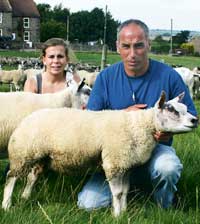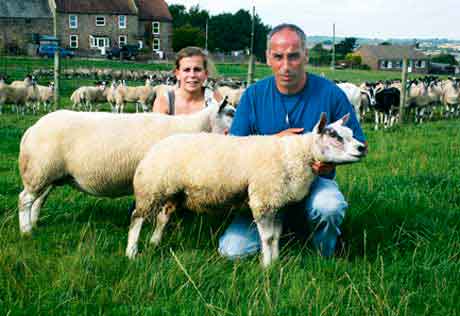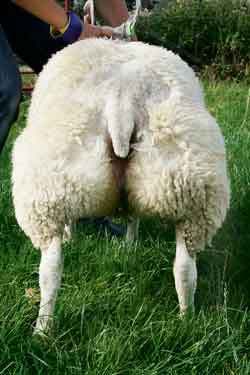Feeding and careful management produce quality lambs

North Yorkshire sheep producer Martin Brown is well-known for the quality of his prime lambs and last year took a host of championship titles at leading primestock shows.
But he also consistently produces top-quality prime lambs, capable of earning a premium of up to £20 a lamb and with exceptionally high killing-out percentages, throughout the season.
It’s no surprise to find the Beltex as the sire of the flock’s primestock winners, but on Martin and Val Brown’s Beechwood House Farm at Newton-le-Willows, near Bedale, the influence of the muscly Dutch breed has been taken to a level many commercial sheep producers would prefer to steer clear of.
The main flock of about 400 ewes is now rapidly heading towards being at least seven-eighths and even fifteen-sixteenths pure Beltex. It’s been developed over the years by retaining home-bred Beltex x North of England Mule females and, as time has progressed, the level of Beltex purity has increased.
While some first crosses will be introduced in the future – 180 Mule gimmer lambs are bought in each year to be sold as shearlings after producing Beltex-sired lambs – the performance of Mr Brown’s almost pure Beltex-type ewes is proving they can be run commercially and deliver high-value prime lambs without undue concerns over lambing difficulties or lambing percentages.

Martin Brown and daughter Hannah say careful sire selection is vital in producing quality prime lambs.
“Getting purer is not as scary as people think. You’ve just got to learn how to feed and manage these ewes,” says Mr Brown.
August and September are the critical months after lambs are taken off the ewes in mid-July. The Beltex-type ewes are “kept hard” and grazed at up to 20 head/acre before moving on to better ground during September in readiness for tupping in October.
Ewes are carefully hand-picked to run with individual tups. “I do this religiously. If we didn’t we’d still get lambs, but we wouldn’t get the top-quality lambs we aim for. The show wins are a bit of fun – but we need really top-quality lambs to sell every week.”
Ewes are sent to a dairy farm for eight weeks during December and January and are scanned before coming home. This year’s results proved the potential fecundity of the breed with a scanning result of 180%.
“Pre-lambing feeding of ewes carrying twins and triplets starts with just a nibble of cake before they come home and go inside. We give them a restricted daily feed of silage and continue with just a small amount of cake that’s increased to no more than a pound a head by lambing time. After lambing we also feed fodder beet,” says Mr Brown who used a total of five tonnes of cake for the 400-strong Beltex flock last year.
 |
|---|
Maintaining the Beltex’s true type is important for Martin, who says the breed is all about conformation. |
“We sell lambs at 40-45kg. Last year’s top price for Christmas primestock winners was £160 a head – 421p a kilogram – but we sold 30 Beltex-cross wethers averaging 43.5kg to level at £105 (241p/kg),” he says.
The flock’s Christmas primestock winning lambs were killing out as high as 58%, but even hoggets sold in the New Year were achieving 54%.
The Browns’ 14-year-old daughter Hannah is deeply involved with the flock. Last year she was an integral part of the team when the family took the champion butcher’s lambs title at the Great Yorkshire Show among several other titles.
This year has seen the family’s lambs take the heavyweight butcher’s lambs ticket at the Great Yorkshire Show as well as several titles at local summer shows.
Tup selection plays a vital part in maintaining the flock’s reputation for producing prime lambs of exceptional quality. Mr Brown wants a “true to type” Beltex.
“Beltex breeders in the UK must be careful not to lose the breed’s true type. We don’t want Beltex tups that are too long and too tall or the shape will be lost. The Beltex is all about conformation.”
